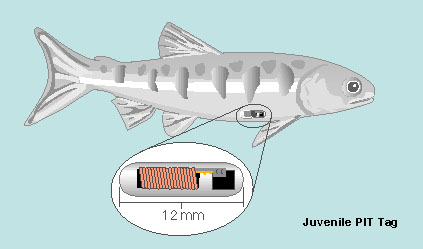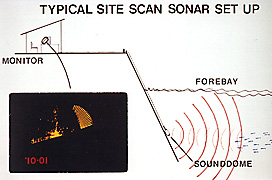The Anadromous Fish Evaluation Program is the set of Corps-funded evaluation and monitoring studies designed to give the region better biological information and insights related to fish passage and survival at hydropower dams. Specifically, studies include such topics as effects of juvenile fish transportation, evaluation of fish guidance devices and surface collection, effects of gas supersaturation on fish, and adult fish passage at the dams. AFEP studies are carried out in the Portland District and Walla Walla District offices of the Corps' Northwestern Division.
Annual Review, 2016
The Corps performed its 2016 AFEP Annual Review for the region November 29-30, 2016. During this review, researchers and managers shared and discussed recent research, monitoring, evaluations or management actions regarding anadromous fish passage and habitat restoration projects in the lower Columbia and Snake rivers. While most presenters provided preliminary results on studies funded or implemented by the Corps, this year’s program also included presentations by Bonneville Power Administration (BPA) personnel on ongoing tributary habitat restoration actions.
For more information, please visit the 2016 AFEP Annual Review in the Corps' digital library. There you will find a resource featuring the program's daily agenda, list of presenters and presentation abstracts. Presentations covered this year include:
• Tributary Habitat Restoration
• Juvenile Fish Passage and Transportation
• Avian Predation
• Estuary Habitat Restoration
• Upstream Fish Passage
Research: PIT-Tagging and Other Research Tools
 The Passive Integrated Transponder, or PIT tag, is a very small (12 mm by 2.1mm) glass tube containing an antenna and an integrated circuit chip. The tag is inserted into the juvenile fish's body cavity. The tag remains inactive inside the fish for its lifetime, until activated at a PIT-tag monitoring facility located at a dam. As the tag is read, data about that particular fish is fed into computers, for use in research studies. The migration of the PIT-tagged fish can be tracked through the river system as it passes through smolt monitoring facilities at various dams. Each PIT tag carries a unique code to enable identification of individual fish, so smaller sample sizes are needed to obtain good results. Also, juvenile fish can be detected as they move through the monitoring facility at a dam, and can be directed to the river or to a transport barge as needed for a particular study. One limitation is that, to read the PIT tags, the fish must pass within 18 centimeters - about seven inches - of the monitor.
The Passive Integrated Transponder, or PIT tag, is a very small (12 mm by 2.1mm) glass tube containing an antenna and an integrated circuit chip. The tag is inserted into the juvenile fish's body cavity. The tag remains inactive inside the fish for its lifetime, until activated at a PIT-tag monitoring facility located at a dam. As the tag is read, data about that particular fish is fed into computers, for use in research studies. The migration of the PIT-tagged fish can be tracked through the river system as it passes through smolt monitoring facilities at various dams. Each PIT tag carries a unique code to enable identification of individual fish, so smaller sample sizes are needed to obtain good results. Also, juvenile fish can be detected as they move through the monitoring facility at a dam, and can be directed to the river or to a transport barge as needed for a particular study. One limitation is that, to read the PIT tags, the fish must pass within 18 centimeters - about seven inches - of the monitor.
The coded-wire tag (CWT) is a small piece of wire inserted into the nose of a juvenile fish. Coded-wire detectors can tell whether a returning adult fish has a coded-wire tag, but to remove and read the tag, the fish must be sacrificed. Coded-wire tags are still used for studies in river reaches where PIT-tag detectors are not yet installed.
Balloon tags contain small, deflated plastic balloons attached to juvenile test fish which are then released. The balloons gradually inflate, bringing the fish to the surface where they can be recaptured. This method is useful for retrieving fish shortly after release.
Radio Tagging
 Radio tags are used in juvenile and adult salmon and transmit a distinctive signal, or frequency. The fish are tracked using radio antennas, which can be mounted on the dams, in boats, or even on a truck. There are a limited number of frequencies allowed for the radio tags, and only one is assigned per fish. A radio-tag study might therefore only look at ten fish or so. The advantage to radio tags is in mobile tracking ability, with signals that can be read up to about a half mile away. Because the tags have batteries and limited life, this method is not used to monitor juvenile to adult survival.
Radio tags are used in juvenile and adult salmon and transmit a distinctive signal, or frequency. The fish are tracked using radio antennas, which can be mounted on the dams, in boats, or even on a truck. There are a limited number of frequencies allowed for the radio tags, and only one is assigned per fish. A radio-tag study might therefore only look at ten fish or so. The advantage to radio tags is in mobile tracking ability, with signals that can be read up to about a half mile away. Because the tags have batteries and limited life, this method is not used to monitor juvenile to adult survival.
In hydroacoustic monitoring, instruments, called "transducers" are strategically placed to record movements of objects in the water, and send those messages to a computer. Researchers are able to deduce whether large or small numbers of fish are attracted through various passage routes.